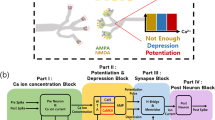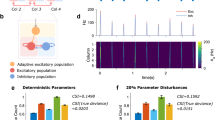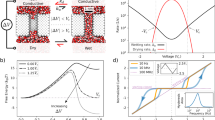Abstract
Interdisciplinary research broadens the view of particular problems yielding fresh and possibly unexpected insights. This is the case of neuromorphic engineering where technology and neuroscience cross-fertilize each other. For example, consider on one side the recently discovered memristor, postulated in 1974, thanks to research in nanotechnology electronics. On the other side, consider the mechanism known as Spike-Time-Dependent-Plasticity (STDP) which describes a neuronal synaptic learning mechanism that outperforms the traditional Hebbian synaptic plasticity proposed in 1949. STDP was originally postulated as a computer learning algorithm, and is being used by the machine intelligence and computational neuroscience community. At the same time its biological and physiological foundations have been reasonably well established during the past decade. If memristance and STDP can be related, then (a) recent discoveries in nanophysics and nanoelectronic principles may shed new lights into understanding the intricate molecular and physiological mechanisms behind STDP in neuroscience, and (b) new neuromorphic-like computers built out of nanotechnology memristive devices could incorporate the biological STDP mechanisms yielding a new generation of self-adaptive ultra-high-dense intelligent machines. Here we show that by combining memristance models with the electrical wave signals of neural impulses (spikes) converging from pre- and post-synaptic neurons into a synaptic junction, STDP behavior emerges naturally. This result serves to understand how neural and memristance parameters modulate STDP, which might bring new insights to neurophysiologists in searching for the ultimate physiological mechanisms responsible for STDP in biological synapses. At the same time, this result also provides a direct mean to incorporate STDP learning mechanisms into a new generation of nanotechnology computers employing memristors.
Similar content being viewed by others
Article PDF
Author information
Authors and Affiliations
Corresponding author
Rights and permissions
About this article
Cite this article
Linares-Barranco, B., Serrano-Gotarredona, T. Memristance can explain Spike-Time-Dependent-Plasticity in Neural Synapses. Nat Prec (2009). https://doi.org/10.1038/npre.2009.3010.1
Received:
Accepted:
Published:
DOI: https://doi.org/10.1038/npre.2009.3010.1
Keywords
This article is cited by
-
Flexible DPPT-TT/PEO Fiber-Exploiting Electro-optical Synaptic Transistor for Artificial Withdrawal Reflex Arc
Advanced Fiber Materials (2024)
-
Experimental photonic quantum memristor
Nature Photonics (2022)
-
An alternative perspective on determining the optimum fractional orders of the synaptic coupling functions for the simultaneous neural patterns
Nonlinear Dynamics (2022)
-
An artificial nociceptor based on a diffusive memristor
Nature Communications (2018)
-
The future of electronics based on memristive systems
Nature Electronics (2018)



